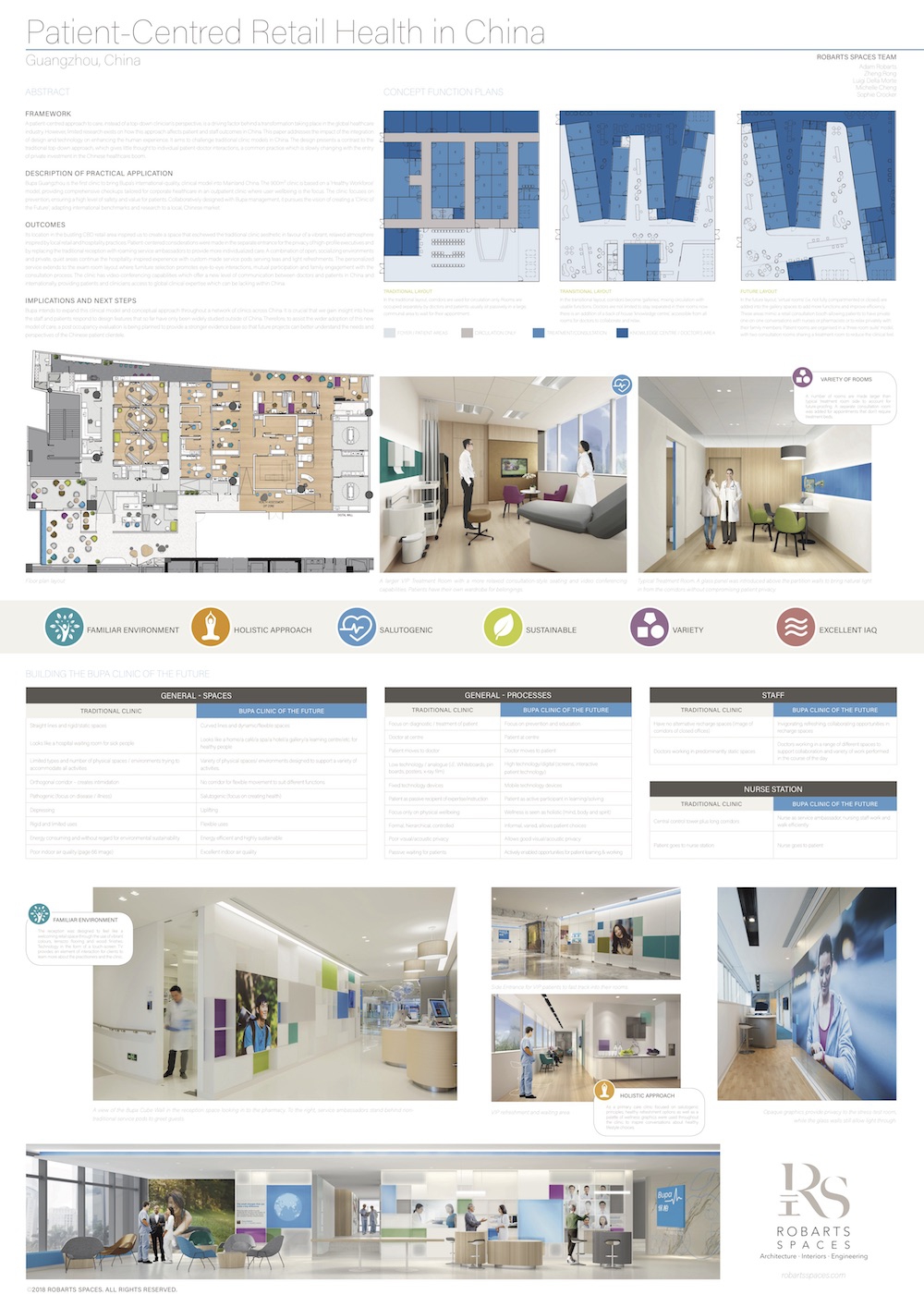Healthcare / New models of care
European Healthcare Design 2018
Patient-centred retail health in China
By Adam Robarts, Zheng Rong, Luigi Della Morte, Michelle Cheng and Sophie Crocker | 08 Jun 2018 | 0
A patient-centred approach to care, instead of a top-down clinician’s perspective, is a driving factor behind a transformation taking place in the global healthcare industry. However, limited research exists on how this approach affects patient and staff outcomes in China.
Abstract
Patient-centred retail health in China
A patient-centred approach to care, instead of a top-down clinician’s perspective, is a driving factor behind a transformation taking place in the global healthcare industry. However, limited research exists on how this approach affects patient and staff outcomes in China.
This paper addresses the impact of the integration of design and technology on enhancing the human experience. It aims to challenge traditional clinic models in China. The design presents a contrast to the traditional top-down approach, which gives little thought to individual patient-doctor interactions, a common practice that is slowly changing with the entry of private investment in the Chinese healthcare boom.
Practical application: Bupa Guangzhou is the first clinic to bring Bupa’s international-quality, clinical model to mainland China. The 900m² clinic is based on a ‘healthy workforce’ model, providing comprehensive check-ups tailored for corporate healthcare in an outpatient clinic, where user wellbeing is the focus. The clinic focuses on prevention, ensuring a high level of safety and value for patients. Collaboratively designed with Bupa management, it pursues the vision of creating a ‘clinic of the future’, adapting international benchmarks and research to a local Chinese market.
Outcomes: Its location in a bustling retail area inspired us to create a space that eschewed the traditional clinic aesthetic in favour of a vibrant, relaxed atmosphere, inspired by local retail and hospitality practices. Patient-centred considerations can be seen in the separate entrance for the privacy of high-profile executives and by replacing the traditional reception with roaming service ambassadors to provide more individualised care. A combination of open, socialising environments and private, quiet areas continues the hospitality-inspired experience with custom-made service pods serving teas and light refreshments.
The personalised service extends to the exam room layout, where furniture selection promotes eye-to-eye interactions, mutual participation and family engagement with the consultation process. The clinic has video-conferencing capabilities, which offer a new level of communication between doctors and patients in China and internationally. The intention is to expand this clinical model and conceptual approach throughout a network of clinics across China. It’s crucial that we gain insight into how the staff and patients respond to design features that, so far, have only been widely studied outside of China. Therefore, to assist the wider adoption of this new model of care, a post-occupancy evaluation is being planned to provide a stronger evidence base so that future projects can better understand the needs and perspectives of the Chinese patient clientele.
Organisations involved

